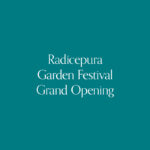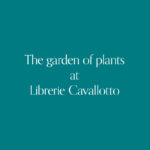The Garden of the Mazari Palm is an attempt to capture the interaction between some of Afghanistan’s most distinctive yet little-known wild landscapes and the cultivated realm of its fields and orchards.
The garden takes its name from the Mazari Palm (Nannorrhops ritchiana), a species characteristic of rocky watercourses in the mountainous eastern provinces. It is organized around the suggestion of a dry riverbed that gently winds before fanning out around a cluster of palms at its lower end.
On one side, beginning from the palms, a series of wild plant communities evokes an ascent up a semi-arid mountain slope toward an open cedar forest. On the other side of the river, gently terraced fields of saffron crocus and damask roses, dotted with fruit trees and a grape arbor, rise toward a rustic seating area surrounded by flowerbeds and shaded by an oriental plane tree and a simple pergola. This sheltered corner represents the most domesticated part of the garden, recalling Afghan everyday horticulture and the cultural love for socializing in picturesque green spaces. A network of paths and a small bridge invite prolonged exploration through the space, designed to blend the ideas of “wilderness” and “garden” by setting them side by side.
Much of the traditional Afghan planting palette used in the garden connects Central Asia to the Mediterranean, from pomegranates and almonds to oriental plane trees, oleanders, and daffodils.

Nicholas Roth currently serves as the Visual Resources Librarian for Islamic Art and Architecture at the Fine Arts Library of Harvard University (Boston, USA). Before taking on his current position, he worked for a landscape design firm, creating gardens inspired by a range of local wild habitats, plant communities, and cultural landscapes—from wetlands and dry coastal scrub to dunes. A lifelong gardener passionate about the lived intersection of history, culture, and practical horticulture, his research, gardening, and design work are deeply and inextricably connected.





